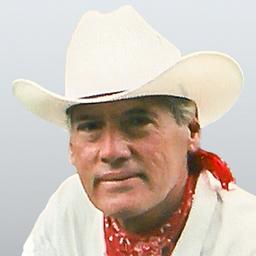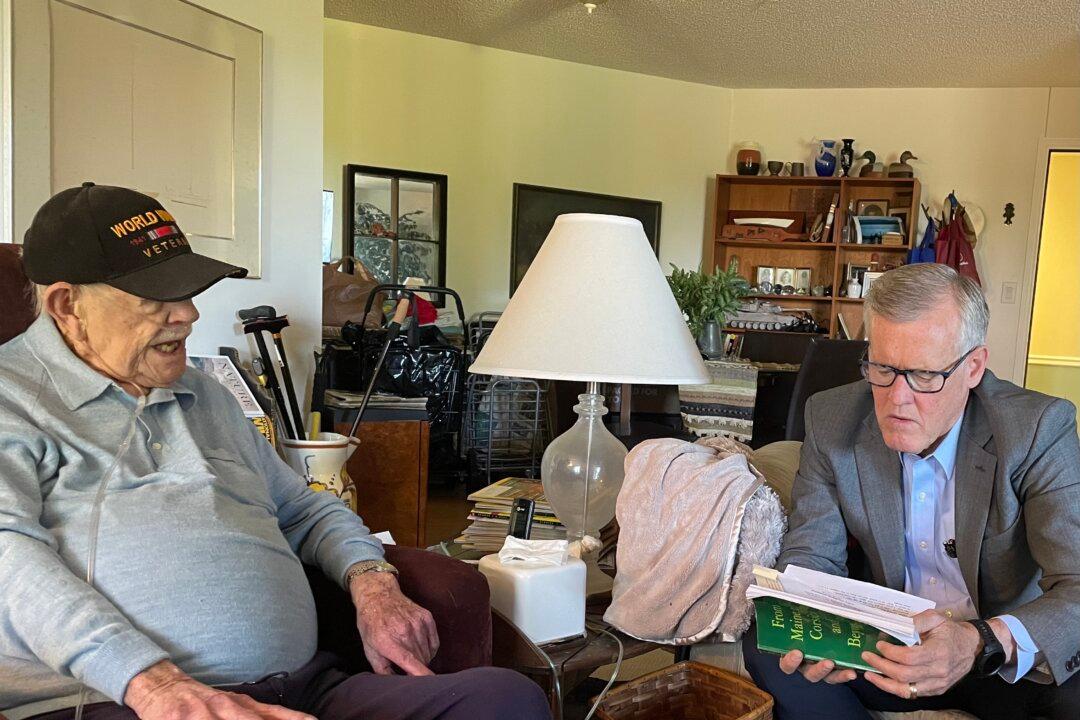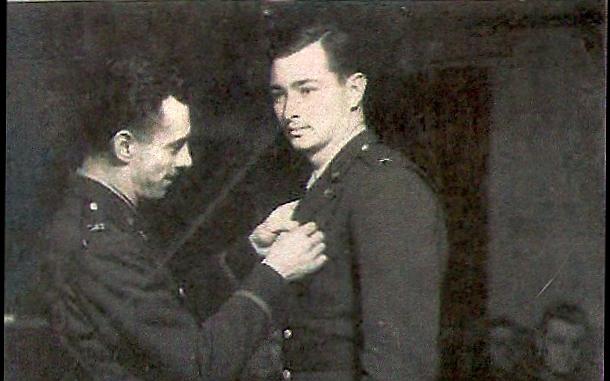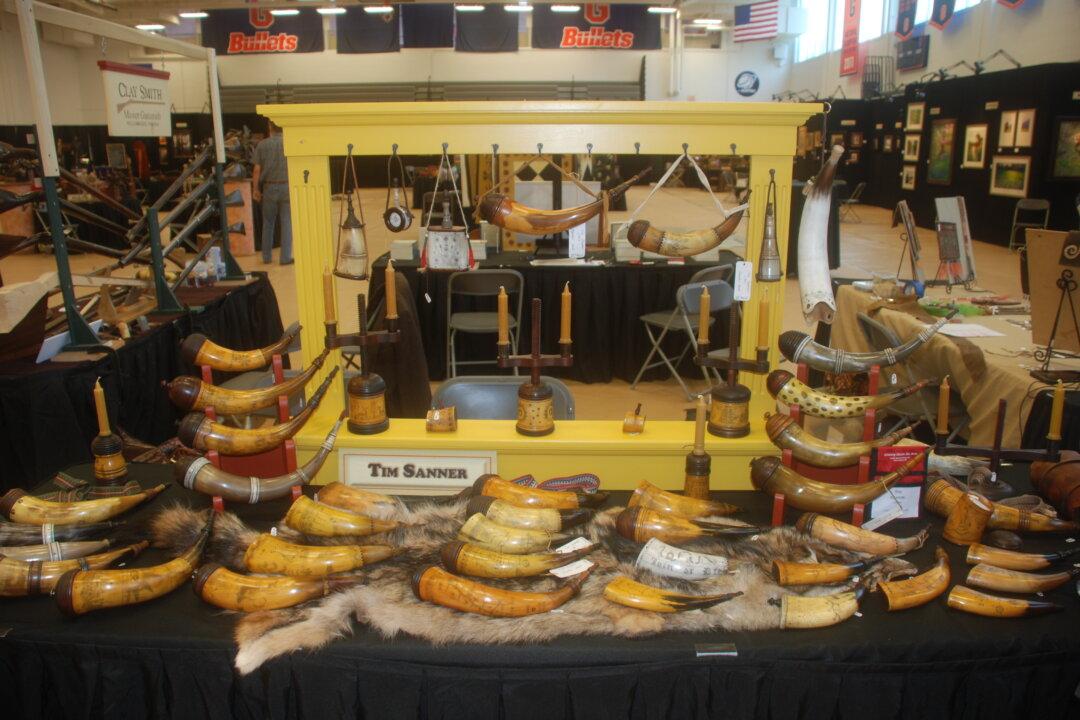Terry Philip is the snake expert at Reptile Gardens just outside Rapid City, South Dakota. He handles the most dangerous snakes in the world. Two questions he gets asked a lot are: Have you ever been bitten? and What does it feel like? Terry answers yes to the first question. He was once bitten by a rattlesnake. To the second question he explains, “It’s like putting your hand in fire and every time your heart beats it’s like hitting your hand with a hammer to put the fire out.”
It would at first seem that a place like Reptile Gardens would be more appropriately situated in a tropic environment rather than in South Dakota’s Black Hills. There is a relatively short summer season then harsh cold winds descend on the area and there are snow storms and blizzards.
“This is the only place in South Dakota where bananas grow,” John Brockelsby laughed inside a huge domed structure that houses tropical plants, birds and reptiles. It is certainly costly to keep that place warm in winter. There are gigantic alligators, lizards and crocodiles as well. No Seminole tribal member is going to wrestle these guys although Johnny B’s father went pretty far teasing money out of tourists to watch him play with venomous snakes.
Johnny B is what everybody calls him. He is the son of Reptile Gardens founder, Earl Brockelsby. His Dad was a snake charmer of sorts. It was tough to make a buck in 1937. There were plenty of rattlesnakes around. Earl caught them, got them gentle enough so he could put one under his hat, then amaze tourists that forked up a dime to watch his show. The young entrepreneur would take off his hat in a finale. Earl never got carried out on a stretcher and the rattlers seemed to cooperate.
“My Dad once caught 465 rattlesnakes in one day. He was never bitten. It started out pretty modestly 77 years ago. Dad dug a pit in the ground and threw snakes in there. There was a steep hill out of town here. Cars in those days slowed way down going uphill. Dad would run out on the road and jump on tourist cars running boards and urge them stay and pay ten cents to watch him jump into the snake pit,” Johnny B said.
It worked, more or less, and the themed roadside attraction expanded. Their reptile collections are among the largest in the world today and include giant tortoises and rare snakes. The deadliest snakes in the world. “It’s in the Guiness Book of World Records. We have the largest, most extensive collection of reptiles on the planet,” Johnny B proclaimed.
His claim was seconded by Terry Phillip, Curator of Reptiles, who said Reptile Gardens has 225 species of reptiles and 160 species of snakes in its collection. The next biggest collections are in Moscow and St. Louis with large collections also in Dallas and New York’s Bronx Zoo.
While Reptile Gardens is not involved making anti-venom, Terry knows the process intimately. He is passionate about his work and says, “Anti-venom must be refrigerated at between 38 and 45 degrees. For the FDA to allow it, anti-venom has an expiration date. If bought fresh most anti-venoms have a two year expiration. The best anti-venom is lyophilized as powder. That will last forever. We don’t do it here. It takes longer to reconstitute lyophilized anti-venom. When needed the anti-venom is put in an IV bag and administered at rates of parts per million. If too fast the patient can have a reaction that can also be fatal.”
Terry described what happens when a venomous snake bites. “The lymphatic system is mostly how it spreads. It is a complex system made up of many proteins and enzymes. A bite from a pit viper is like swallowing a grenade. It does a whole bunch of damage to the whole body. There is renal failure, the heart needs to be treated. There is a localized reaction immediately. On the average person with an average reaction it takes an hour for death to occur. The lips tingle, there is a metallic taste in the mouth, then a systemic problem, then cardiac and renal failure.”
Not all that pleasant. Especially when it may take hours to get from a remote area where the snake bite occurred to proper medical attention. “Sometimes the reaction is extreme. A sixteen year old boy was bitten this summer by a rattlesnake in Custer State Park. He dropped like a rock. It got him in an artery in his ankle. He may also have been allergic. He lived.” Terry’s last comment about the boy’s survival made the story have a happy ending. It is not always the case with morbidity from snake bites around the world.
Terry pointed out one of his charges. “That’s a mean snake. The western brown snake is very defensive, has a very defensive disposition and a very toxic venom. There is a delayed onset of symptoms followed by cardiac failure.” It was about that time that Terry, Johnny B and Johnny B’s nephew and the third generation working at Reptile Gardens, Jeff Oldham, brought out a 75 pound Burmese python.
“They grow up to about 22 feet and can weigh two hundred pounds. This one is about eleven feet and eight years old.” Terry offered visitors the chance to hold the python. Most of those gathered around were in some trepidation. One or two daring souls stepped forward and Terry, Johnny B and Jeff draped the snake around them. They helped support the snake’s weight, when their help was accepted, or simply let the visitor take the whole 75 pound python and pose for photographs.
“It has a hundred teeth. Four rows on the top and two on the bottom. Each tooth is a little larger than a quarter-inch.” Terry words didn’t seem to be all that reassuring to a woman holding the big snake. Many of the off camera grimaces were rather less than confident. The python did what pythons do, it began coiling itself around the person holding it. The tail began to wrap around one hapless soul’s legs. It was harmless but the visitor did seem relieved when Johnny B and Jeff took the snake back and offered it to the next person willing to hold it.
Terry had time now, with Johnny B and Jeff engaging visitors, to explain that “Anti-venom is made from raw venom by injecting small quantities into horses and sheep. The process takes place over six months. It gives the horse or sheep a chance to develop antibodies. The blood is then withdrawn, filtered down into antibodies to get rid of properties of blood and just have the antibodies. The horse or sheep become resistant. When used, the anti-venom molecule attaches to the venom molecule neutralizing it.”
Snake venoms behave in different ways. Terry indicated that whole blood clotting tests are used as indicators since blood clotting is “A significant problem in snake bites. Snake venom causes inability of blood to clot. Some snakes cause blood to clot like the Taipan snake from Australia. We have 18 of them here. Pit vipers are anti-coagulant.”
“With the Russel’s viper and saw scaled viper it averages a couple of hours or a couple of days after the bite for death to occur. It depends how old the snake is, when it ate last, the snake’s general health then the variables in the human. If there is a pre-existing heart condition for example. The venom brings on cardiac failure, stroke and kidney failure. Those are the most common causes of death from snake bites.”
The good news is that there has not been a snake bite fatality in South Dakota in 65 years. When asked about the Fer de Lance known in Guatemala as the Barba Amarilla, Terry answered, “It is one of the most horrific snakes. With morbidity a victim is going to lose something. A finger, leg or arm. Here we are close to a hospital. Imagine in Guatemala where it is remote. I have a snake similar to that one from the Island of St. Lucia.”
“I won’t go in there,”Johnny B laughed. Terry entered the large room that houses Gus, an 11' 11” American alligator that would be longer only part of its tail is missing. Perhaps Gus bit it off. Gus looked as though he could and would swallow Terry whole in one gulp. Terry skillfully used a stick to put Gus through his paces, snapping its jaws for visitors behind protective glass.
“Alligators have a seal at the base of their throat to keep out water when attacking prey. Their nostrils and ears have valves that seal. Alligators have eyes, ears and nose elevated to keep them above water when they are on the surface.” Instructive and educational.
Maniac is a salt water crocodile. The giant is 15' 5” and weighed 1,042 pounds on arrival at Reptile Gardens from Australia. Maniac was born in 1970, in captivity. It is the largest crocodile in captivity in the western hemisphere the folks at Reptile Gardens say. Crocks can grow to 22 feet, a record, and live a hundred years.
A giant lizard looked ominous behind its glass enclosure. Terry went inside to feed it. He presented a kind of stick that had a grip at the end that held wiggling rats. This drew a big crowd. The biggest fan was a little kid. At first wary, then fascinated then laughing hilariously each time Terry dropped a squirming rat into the giant lizard’s mouth.
The second floor of the domed tropical garden contains many more snake cages and an amazing skeleton of a Burmese python. It was a 19 foot long snake. The coiled skeleton has all of its perfectly preserved 328 pairs of ribs and 400 vertebra with skull that illustrates two lower jawbones with an extra bone between the lower jaw and skull that allows great expansion of the mouth. The display states that the longest snake in the world was a reticulated python caught in 1902 that was 33 feet long. Compare that to what is considered a very large diamond back rattlesnake that reaches eight feet, the python’s size becomes apparent.
South Dakota has many extraordinary natural wonders. There are many sights to see in the Black Hills and great enjoyment to be had in the gateway to the Black Hills, Rapid City. Take time on any visit to explore Reptile Gardens. It is a unique experience with world class exhibits, and yep, the only banana tree in South Dakota.
For more information go to www.visitrapidcity.com or call them toll-free at 1-800-487-3223. For information, brochures and free maps go to www.travelsd.com or call them toll-free at 1-800-732-5682. For information about Reptile Gardens go to www.reptilegardens.com or call them toll-free at 1-800-335-0275 or 605-342-5873.





